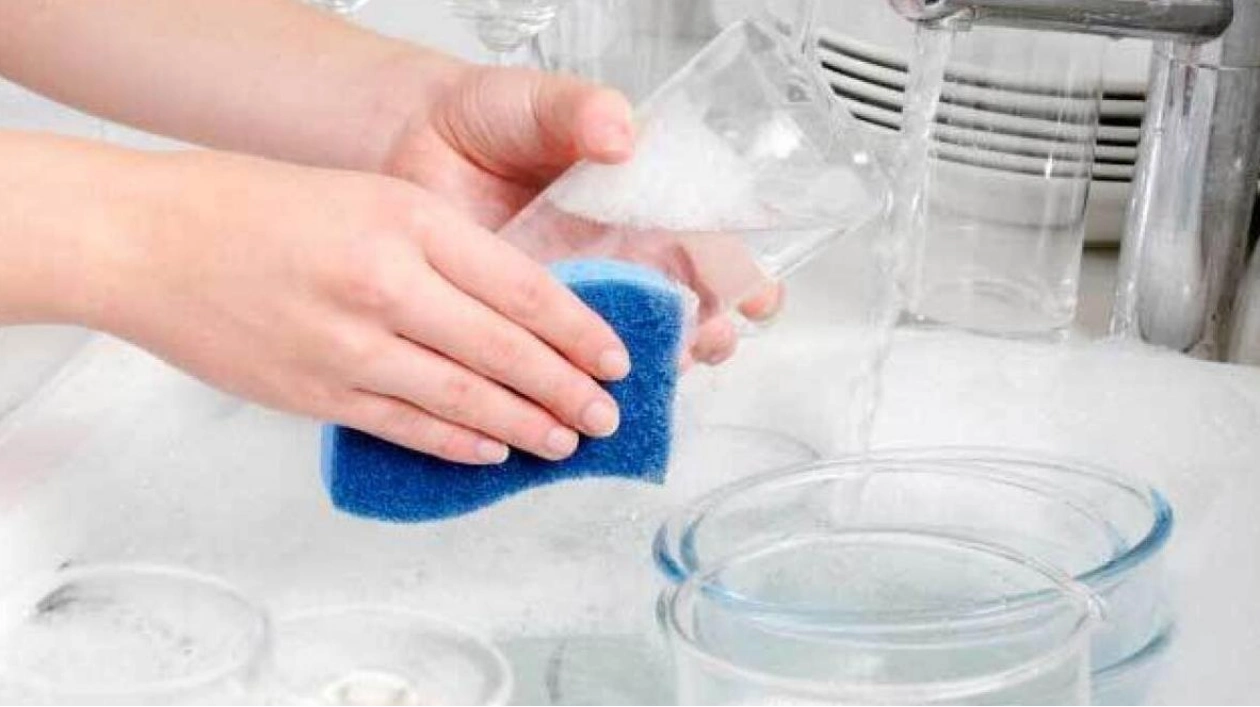Kitchen sponges, widely used for daily cleaning, can harbor harmful bacteria that may lead to serious illnesses such as pneumonia and kidney failure, according to experts. These cleaning tools serve as breeding grounds for bacteria and should be replaced regularly to mitigate health risks.
“There are thousands of bacteria on a kitchen sponge, and this is a proven fact,” said Dr. Mohammed Harriss, consultant pulmonologist at Medcare Hospital Sharjah. “The sponge remains damp, allowing bacteria to multiply rapidly, increasing the risk of infection.” A 2020 study by Sharjah University researchers confirmed that kitchen sponges are heavily contaminated with pathogenic bacteria, raising the risk of food contamination and potential infections.
Dr. Shreen Mohamed Hemdan, a specialist in family medicine at Burjeel Medical Centre, Al Shamkha, highlighted the types of harmful bacteria commonly found in kitchen sponges, such as Escherichia coli (E. coli), Salmonella, and Staphylococcus aureus, all of which pose significant health risks. “E. coli and Salmonella are often linked to gastrointestinal infections, while Staphylococcus aureus can cause skin infections that may become severe and enter the bloodstream if untreated,” said Dr. Hemdan.
Neetha Jhaveri, a functional medicine practitioner at Wellth, emphasized that cross-contamination is a major reason kitchen sponges become breeding grounds for bacteria. “Many people use the same sponge for various tasks — washing dishes, scrubbing vegetables, and even cleaning raw meat,” she said. “Then, they use the same sponge to wipe down kitchen counters and fridges, further spreading contamination.” Jhaveri advises wearing gloves while washing dishes to prevent bacteria from entering the bloodstream through the skin. She also suggests microwaving the sponge for 30 seconds at the end of each day to remove moisture.
While infections from kitchen sponges are not exceedingly common, Dr. Hemdan noted that those with compromised immune systems are more susceptible. “Bacteria from sponges can cause illnesses like gastroenteritis, leading to symptoms such as nausea, vomiting, and diarrhea. In more severe cases, they can result in skin infections, urinary tract infections, or even respiratory complications.”
Dr. Hemdan recommends replacing kitchen sponges every one to two weeks, depending on usage frequency, and disinfecting them regularly. “Soaking the sponge in a bleach solution, microwaving it when damp, or running it through the dishwasher are effective ways to reduce bacterial contamination. However, the most crucial step is replacing the sponge before bacteria has a chance to proliferate.”
For those looking to minimize risks, experts suggest safer alternatives like microfiber cloths, silicone scrubbers, or cellulose sponges. “Microfiber cloths can be washed after each use, while silicone scrubbers dry faster and are easier to disinfect,” said Dr. Hemdan. These alternatives, combined with proper cleaning practices, offer more hygienic solutions for household cleaning.
If exposed to harmful bacteria from a kitchen sponge, individuals may experience symptoms similar to foodborne illnesses. “Symptoms such as nausea, vomiting, abdominal pain, diarrhea, and fever are common indicators of bacterial infection,” said Dr. Hemdan. “People with compromised immune systems should be especially alert for skin infections, which can manifest as redness, swelling, or painful lesions. If any of these symptoms persist or worsen, seeking medical advice is imperative,” she added.






